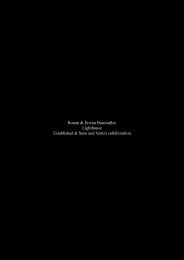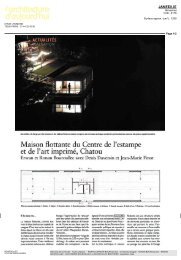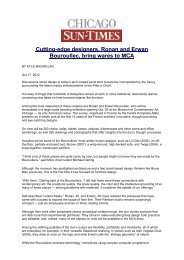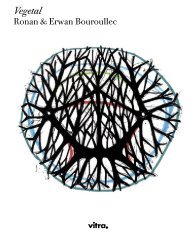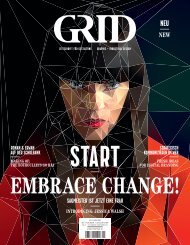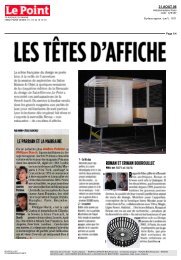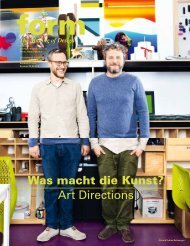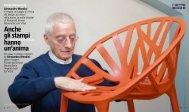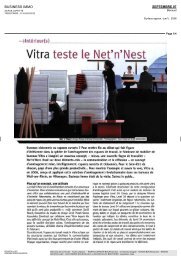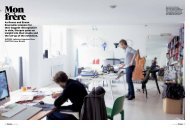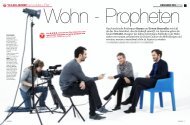Blade Runners - Ronan et Erwan Bouroullec
Blade Runners - Ronan et Erwan Bouroullec
Blade Runners - Ronan et Erwan Bouroullec
You also want an ePaper? Increase the reach of your titles
YUMPU automatically turns print PDFs into web optimized ePapers that Google loves.
More leuku reinventions by Jasper Morrison (left), and <strong>Ronan</strong> and <strong>Erwan</strong><br />
<strong>Bouroullec</strong>. (img: Chikako Harada)<br />
Making such a robust tool requires<br />
considerable skill in the traditional<br />
techniques that Sami craftsmen have<br />
honed for centuries. Those skills are<br />
now dying, which is why the Finnish<br />
designer Simo Heikkila is trying<br />
to revive them. ‘‘The leuku is a<br />
beautiful and functional object, pure<br />
in shape, well balanced and simply<br />
composed,’’ he said. ‘‘Locally developed<br />
objects like this are vanishing<br />
all over the world.’’<br />
He began by organizing a workshop<br />
for students at the forge of one of<br />
Finland’s great leuku makers, the<br />
blacksmith Josef Laiti. The next step<br />
was to invite international designers<br />
to reinterpr<strong>et</strong> the original 7-inch<br />
knife. The results were exhibited in<br />
Finland last year and will be shown<br />
again at the Saint-Étienne Design<br />
Biennial in France this fall, when a<br />
book on the project is to be published.<br />
Most of the designers remained<br />
faithful to the original leuku while<br />
interpr<strong>et</strong>ing it in their own way. ‘‘It<br />
didn’t seem right to try and redesign<br />
som<strong>et</strong>hing which has its shape from<br />
hundreds of years of trial and error,’’<br />
said Morrison, who is known for<br />
his subtly minimalist design style.<br />
‘‘I simply tried to imagine what a<br />
beautiful leuku would look like, refining<br />
the blade and handle shape, and<br />
giving it a sheath with a simple way<br />
of attaching it.’’<br />
The <strong>Bouroullec</strong> brothers showed<br />
similar restraint, but used bone<br />
— ‘‘the most sensual of the original<br />
leuku materials,’’ as <strong>Ronan</strong> <strong>Bouroullec</strong><br />
put it — for both the handle and<br />
the sheath.<br />
By contrast, Grcic, who always starts<br />
the design process by analyzing<br />
how the object will be used, looked<br />
for ways of improving the leuku<br />
functionally, and he found a flaw. ‘‘It<br />
seemed difficult to pull the original<br />
knife from its sheath,’’ he said.<br />
‘‘So I added a lash on the end of the<br />
handle. Your finger can go through a<br />
hole in the lash to pull out the knife<br />
in an emergency.’’<br />
By puncturing both the knife’s handle<br />
and sheath with a series of holes,<br />
revealing the part of the blade that’s<br />
usually hidden beneath the handle,<br />
the Dutch designer Gijs Bakker<br />
hoped to highlight the craftsmanship<br />
of the knife. ‘‘The hidden part shows<br />
off the technique, but because it’s<br />
considered to be ugly and, of course,<br />
can’t be held in the hand, it’s always<br />
covered,’’ he said. ‘‘My design is a<br />
sort of homage to the blacksmith.’’



